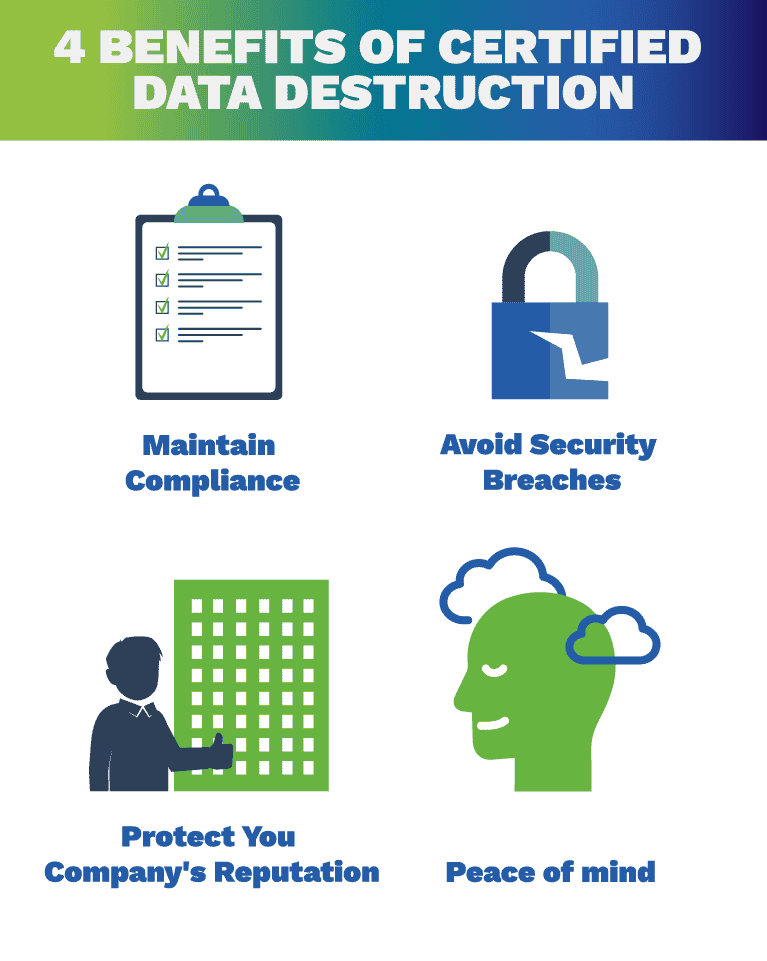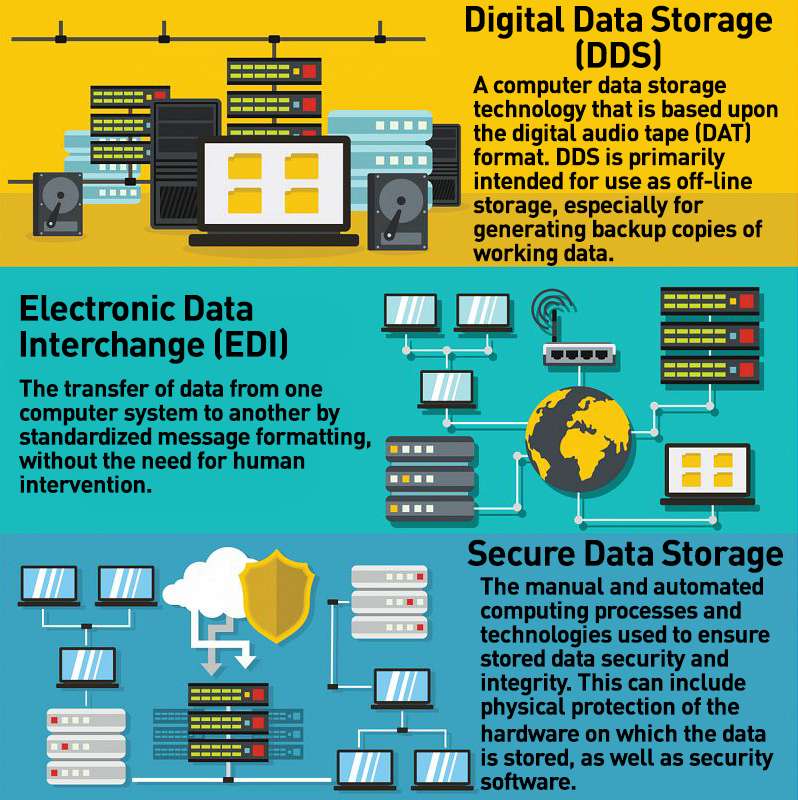Data Destruction Solutions: A Key Element in Your Cyber Security Technique
Wiki Article
The Relevance of Effective Information Devastation Practices in Safeguarding Sensitive Details and Ensuring Computer Security
In a period where information breaches are increasingly typical, the importance of effective data destruction practices can not be overemphasized. Organizations face considerable threats when sensitive info is inadequately disposed of, possibly causing unauthorized accessibility and extreme monetary consequences. Applying robust data destruction approaches not just alleviates these risks yet likewise lines up with legal compliance requirements, ensuring that organizations maintain their track record and foster client trust fund. Nevertheless, the inquiry remains: what certain approaches can be used to boost these practices, and how can organizations efficiently incorporate them right into their overall cybersecurity framework?Understanding Data Devastation
Comprehending data damage is vital in today's electronic landscape, where delicate information can conveniently be endangered. Reliable information devastation entails not merely removing documents however guaranteeing that data is irretrievable via thorough techniques. This procedure is essential for organizations that handle confidential client info, intellectual property, or interior files, as any kind of breach can bring about serious economic and reputational repercussions.
Data damage encompasses numerous techniques, including shredding physical media, degaussing magnetic storage devices, and utilizing software-based remedies that overwrite data multiple times. Each method offers a particular purpose and has to align with the sensitivity of the info being dealt with. For instance, physical damage is frequently chosen for disk drives having highly personal information, while software methods may be adequate for less sensitive info.
In addition, sticking to industry standards and policies, such as the General Data Defense Policy (GDPR) or the Wellness Insurance Coverage Transportability and Accountability Act (HIPAA), is important for conformity and to minimize lawful threats. Organizations has to create a robust information devastation plan, train staff members on best practices, and consistently examine their procedures to guarantee that all sensitive information is dealt with firmly and successfully.
Risks of Inadequate Practices
Poor data destruction techniques reveal companies to significant threats that can have significant consequences. When sensitive info is not appropriately taken care of, it stays susceptible to unapproved gain access to, which can result in data violations and identification burglary. Such events not just jeopardize the protection of people but likewise stain the organization's track record, leading to a loss of consumer trust and prospective monetary effects.Moreover, regulatory conformity is progressively strict in lots of sectors. Failure to stick to information destruction policies can lead to substantial penalties and lawful activities versus companies. These fines can divert and strain economic resources attention from core organization operations.
Additionally, the abuse of recurring information can bring about copyright theft or business espionage, endangering affordable benefits (data destruction). The impact of poor data destruction expands beyond prompt financial losses; it can likewise lead to lasting damage to brand name stability and market position

Organizations must identify that data security is not only about protecting against violations; it also encompasses the accountable management of data throughout its lifecycle. Disregarding efficient information devastation protocols can have tragic effects, emphasizing the need for durable steps to reduce these risks.
Best Practices for Data Destruction
Executing reliable information damage methods is crucial for guarding delicate info and maintaining conformity with governing criteria. Organizations needs to take on a multi-faceted technique to make sure that information is irretrievable, thus stopping unapproved gain access to and potential breaches.First, data need to be classified based on sensitivity, permitting organizations to use suitable devastation techniques tailored to the level of threat. For digital information, using software-based data-wiping tools that follow industry requirements can properly overwrite existing information. Physical damage methods, such as shredding or degaussing, are critical for devices that keep delicate details, guaranteeing total removal.
Establishing a clear data retention policy is important, outlining just how long various sorts of information should be retained prior to damage. Normal audits of data storage systems are additionally necessary to recognize unneeded or obsolete information needing removal.
Furthermore, training workers on the significance of information destruction and the certain protocols to comply with fosters a society of safety and security within the company. Finally, keeping documents of information damage refines provides liability and supports compliance with exterior guidelines and internal plans. By sticking to these ideal techniques, organizations can significantly mitigate the threats related to information direct exposure.
Legal and Conformity Considerations

Failing to follow these guidelines can lead to severe charges, including considerable fines and reputational damage. Organizations should apply a robust information devastation policy that straightens with these lawful structures and supplies clear guidelines on the appropriate methods of information disposal, whether physical shredding or electronic cleaning.
Furthermore, preserving documents of information devastation activities is crucial for demonstrating compliance throughout audits or examinations. By prioritizing legal and conformity considerations, organizations can enhance their information safety pose and foster depend on with customers and stakeholders, inevitably adding to a more secure data management environment.
Advantages of Effective Information Devastation
Efficient information devastation techniques extend past plain compliance; they use significant advantages to organizations that prioritize them. By making certain that sensitive info is irretrievably destroyed, companies mitigate the like it danger of information breaches and the potential financial effects connected with them. This proactive approach not only safeguards against unapproved accessibility however additionally enhances the overall credibility of the organization in the eyes of customers and stakeholders.Carrying out durable information devastation methods, such as physical devastation of storage tools or advanced data cleaning methods, adds to the strengthening of a company's cybersecurity position. data destruction. It lowers the possibility of intellectual residential property burglary and protects exclusive details, therefore preserving an affordable side on the market

Final Thought
Finally, reliable information damage techniques are essential for safeguarding sensitive information and improving general computer safety and security. By implementing thorough methods such as software program, shredding, and degaussing overwriting, companies can reduce the threats related to unapproved access and information violations. Adherence to regulative criteria, including GDPR and HIPAA, additional enhances conformity and shields versus legal effects. Eventually, a dedication to robust information devastation strategies cultivates a society of obligation, therefore enhancing an organization's cybersecurity position and preserving client trust fund.
Report this wiki page